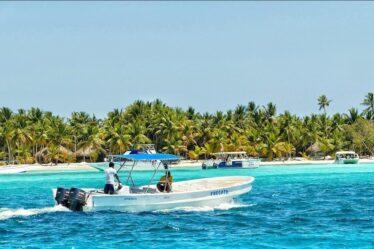
The Maldives is a country made up of countless islands, and getting around isn’t as straightforward as it may seem. Your only real options are either by boat or by plane. Although the choices are limited, it can still get a bit tricky, especially if you’re not familiar with the system. Here’s what you should know about public transportation in the Maldives.
The Slow Boat in the Maldives
The slow boat is the local ferry service, used by both people and goods to hop between islands. It’s the cheapest option but don’t expect it to be super smooth. It is the old and basic way of public transportation in the Maldives.
If you’re in Malé, the capital, there are two main terminals you need to know about. The MTCC Terminal is the most convenient, located right by where the airport ferry drops you off. Schedules, though, are a bit of a mystery. For example, if you want to get to Dhigurah, ferries run at 8:30 AM on Tuesdays, Thursdays, and Saturdays, and the best part? It costs less than $4 per person. Not bad, right?
But here’s the catch: these ferries don’t run if the weather is bad. One time, we had been on the boat for two hours when it turned around and headed back to Malé. Total disaster for our plans that day. Even locals seem to have trouble figuring out the schedules sometimes, which is kind of strange. So, the best bet is to just ask at the terminal.
The public ferry is a solid option if you’re looking to save money. They aren’t the most luxurious, but trust me, when the sea gets rough, it’s actually better to be on one of these than a speedboat, even though it doesn’t make sense driving in general when the sea is to rough.
Speedboats in the Maldives
Now, speedboats are a whole different story. They’re faster, but wow, are they expensive. You can usually negotiate a bit on the price, and it’s always good to ask a local what the going rate is. There’s often one price for locals and another for tourists, unlike the ferries which have fixed prices.
For the same route from Malé to Dhigurah, you’re looking at paying anywhere between $50 and $65 per person. Sure, it’s quicker, but let me tell you about my experience: it wasn’t great. The weather was bad, so they kept the windows closed, and the ride was like a rollercoaster. People were getting sick, the air inside was awful, and we were being thrown around. By the time we got off after two hours, I was completely done for the day.
Yes, speedboats are there for when you’re in a rush or when the ferries aren’t running, but for me, it just wasn’t worth the cost. The seats are a bit more comfortable than the ferries, but the ride felt more like being in a plane or a theme park ride than on a boat.
Where to Catch a Speedboat in Malé
If you’re looking to hop on a speedboat, there are two places in Malé to do that. The first is at the airport. Here’s something important to note: if you don’t have a hotel booking, they won’t let you on. It’s a strict rule, and the prices here tend to be more fixed and a bit higher.
The other option is the port between the fish market and the MTCC Terminal in Malé. Here, you’ll usually find more locals and cheaper rates. The boats often have their destination written on them, but it’s always a good idea to double check with someone nearby. A local will know who’s going where.
To give you an idea of prices: don’t pay more than $20 for Maafushi and no more than $40 for Rasdhoo. Some boat operators are fair, but others might try to charge you more, so be prepared to negotiate.
Summary
Public transportation in the Maldives is something different.
If I have the choice, I’ll always go for the slow boat (public ferry). Sure, it’s slower, but for me, it’s more enjoyable. Plus, you get the chance to meet locals along the way. However, if the weather is bad and the ferries aren’t running, you might be stuck waiting for another day or forced to take a speedboat.
Traveling around the Maldives is all about flexibility and patience. Just go with the flow, ask locals for tips, and remember that sometimes plans will change because of the weather.




Leave a Reply